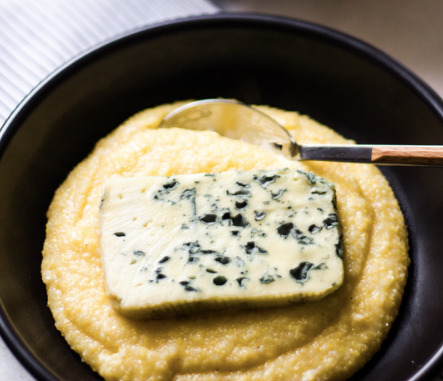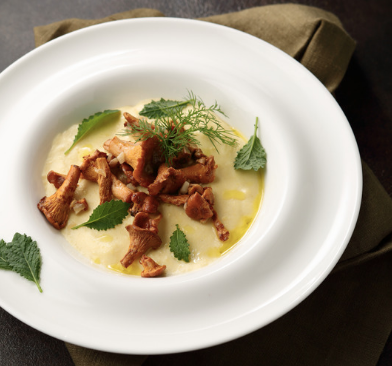I an earlier post I shared tips on what constitutes perfect polenta.

Technicalities aside, today I’m sharing why polenta means so much to me. It is a dish of the heart. A binding element of family.

Peasant frugality established the custom of eating polenta on the spianatoia, a large wooden board placed on the common table with the entire family gathered around. The cooked cornmeal was spread in a large disc on the spianatoia, with a single sausage placed in the center. This was probably the only protein and rich, fatty meat available that day. Starting from the outer part, each seated guest proceeded inward consuming the section in front and tunneling their way to the middle of the table towards the sausage. The race was who could get to the sausage first, wiping the table clean.
That sense of family aggregation has endured. My mother considered polenta the best food to keep us warm on a cold winter day, and represented her culinary hug. We live in Rome and the climate is mostly mild. We get 300 days of sunshine. Mom, however, often took advantage of a providential summer thunderstorm to suggest making polenta. Peering at the light drizzle from the window I would often hear her mutter joyfully: “Perfect day for polenta.” As we’d sit there, sweating and scoffing in silence, we all would secretly express our mental thank you at the sky for the unexpected downpour.

As I write this in my home office, it’s unusually cold for this time of year. I am wrapped in a blanket, beanie pulled down over my ears, and double socks on my feet. The centralized heating won’t go on for another two hours.
A month ago was my mother’s birthday, she would have turned 85. It’s only fair that on this chilly day I should celebrate her memory with a steaming plate of polenta. I’m sure she would agree on the menu choice for her compleanno. Here’s how she taught me to make it, rain or shine.
1 liter (4 cups) water
200 g (1 1/4 cups) cornmeal
Salt
Bring the salted water to a boil. While constantly stirring with a wire whisk, slowly add the cornmeal trying to avoid forming lumps. Switch to a wooden spoon and reduce the heat to a gentle simmer, and brace yourself: you will be stirring constantly for the next 45 minutes to an hour. Or more. A tall drink might help. And/or nibbling on a chunk of Parmigiano. You must engage in all this stirring in order for the polenta to cook evenly and not burn and stick to the bottom of the pot. Do you have a copper pot? That is the ideal vessel.
Observe the rhythmic build-up of steam: small volcanic explosions on the surface. Lovely sound, all part of the comforting powers of polenta. When smooth, and no longer granular your polenta is ready. When it has finally reached the consistency of oatmeal and slides off the sides of the pot, you can rest your arm for a few minutes. But please don’t let it cool down, you must ladle it steaming hot directly from the pot onto plates (rustic wooden ones would be best as they keep the polenta warm for longer).
This is the base. Now for the toppings: like for pasta or rice, there is a multitude of recipes. Here are a few favorites that Mamma would ladle generously over our piping hot polenta:
Salsicce e Spuntature – rustic red sauce with pork sausages and short ribs
Ai Finferli – polenta topped with sautéed chanterelles (or any mushrooms available).

Burro e Parmigiano – the butter melts directly on the polenta, then she’d dust with copious amounts of grated cheese
Pasticciata Modenese – add slices of sharp or sweet Gorgonzola cheese to the above
Valdostana – swap the Gorgonzola above for 1 cup cubed Fontina. Note: In the Alpine regions of northern Italy they use the taragna whole grain variety, which is coarse and speckled with darker flecks. Uncork the wine and toast to winter.
Auguri Mamma!









